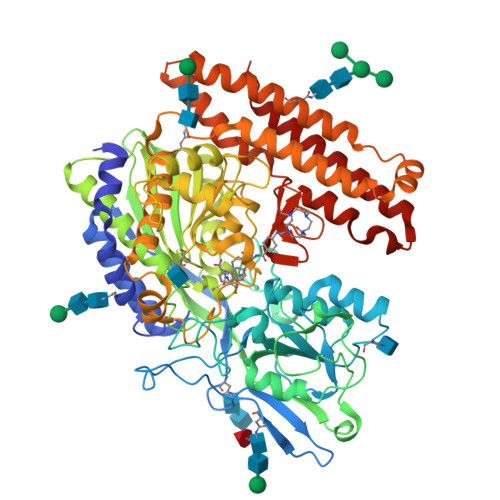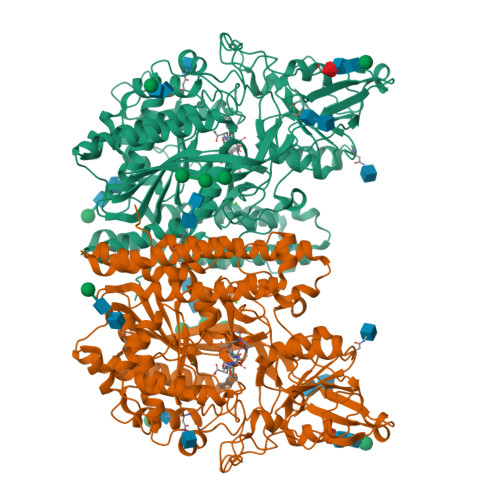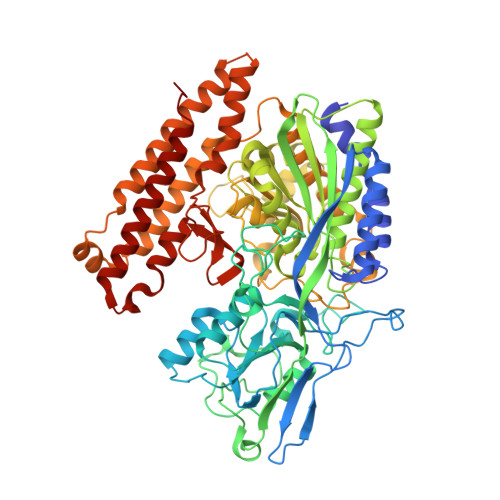Structure-Activity Relationships and Biological Insights into PSMA-617 and Its Derivatives with Modified Lipophilic Linker Regions.
Schafer, M., Bauder-Wust, U., Roscher, M., Motlova, L., Kutilova, Z., Remde, Y., Klika, K.D., Graf, J., Barinka, C., Benesova-Schafer, M.(2025) ACS Omega 10: 7077-7090
- PubMed: 40028088
- DOI: https://doi.org/10.1021/acsomega.4c10142
- Primary Citation of Related Structures:
8BO8, 8BOL, 8BOW - PubMed Abstract:
PSMA-617 is recognized as a benchmark ligand for prostate-specific membrane antigen (PSMA) owing to its broad utilization in prostate cancer (PCa) targeted radionuclide therapy. In this study, the structure-activity relationships (SAR) of PSMA-617 and two novel analogs featuring modified linkers were investigated. In compounds P17 and P18, the 2-naphthyl-l-Ala moiety was replaced with a less lipophilic 3-styryl-l-Ala moiety while the cyclohexyl ring in P18 was replaced with a phenyl group. The first ever crystal structure of the PSMA/PSMA-617 complex reported here revealed a folded conformation of the PSMA-617 linker while for the PSMA/P17 and PSMA/P18 complexes, the extended orientations of the linkers revealed linker flexibility within the PSMA cavity, a change in binding that can be exploited for the structure-guided design of PSMA-targeting agents. Despite structural differences from PSMA-617, the analogs maintained high PSMA inhibition potency, cellular binding, and internalization. In vivo biodistribution studies revealed comparable tumor uptake across all three compounds with P18 displaying higher spleen accumulation, likely due to phenyl ring lipophilicity. These SAR findings provide a strategic framework for the rational design of PSMA ligands, paving the way for the development of next-generation theranostic agents for PCa.
Organizational Affiliation:
Service Unit for Radiopharmaceuticals and Preclinical Studies, German Cancer Research Center (DKFZ), Im Neuenheimer Feld 280, 69120 Heidelberg, Germany.



























